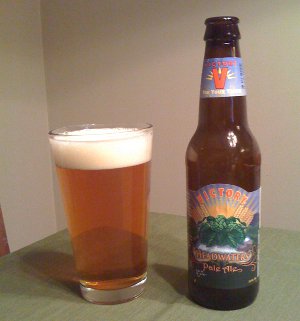While my last update covered some fantastic beers, I was a little disappointed by the variety of good beers available to me in Vegas. I’m sure that if I actually sought out some beer bars, I would find something new and interesting, but it seemed that most places stocked the standard Macros and maybe one or two interesting beers. Fortunately, I did managed to have a few other beers, even some that I’d never had before:
- Moretti La Rossa – At some point we ended up at an Italian restaurant for a sponsored junket/open bar and they actually managed to have a few Italian beers available. I picked one that I hadn’t heard of (because most of what I have heard of from Italy is not so good, like Peroni) and it turned out to be pretty good. It’s technically a Doppelbock, a style I’m not terribly familiar with, but which I should probably check out more often. It was a darkish red/brown color with a finger or two of head, and the smell was much fruitier than I was expecting. It’s also got some roastiness and maybe caramel sweetness in the nose. The taste went along with that. Medium bodied with high carbonation, it was quite drinkable and the alcohol was well hidden (I had no idea it was as strong as it was). As doppelbocks go, I understand this one is a bit thin, but it worked well enough for me, and was a welcome diversion from the typical macro selections. I have no idea if Moretti is part of the burgeoning Italian Craft beer scene, but my gut says it isn’t, even though I enjoyed this. More research needed… B+ (Beer Nerd Details: 7.2% ABV bottled (12 oz). Drank from a plastic cup (yeah, no good beer geek glasses to be had – hard to complain about then when I’m getting free beer though))
- Sin City Stout – Walking around the maze that is the Venetian shops, I spied this little hole in the wall:

In talking with the bartender, I learned that this is an uber-local brewery, only distributing to Las Vegas. Their lineup seemed rather standard (though I should note that their “seasonal”, apparently some sort of IPA, was out when I was there), but I wanted to try something new and different, so I ordered up a stout:

It was on a nitro tap, so I got one of them gorgeous pours, even if it had to be in a plastic cup. Indeed, it took forever for the nitro foam to subside, which wasn’t really a problem for me, as I do enjoy a good nitro pour every now and again. The beer itself was actually a pretty solid stout. Nothing particularly special about it, save for the nitro pour, but it holds its own against the other nitro stouts I’ve had, including Guinness. Dark, roasty, and tasty, I would probably order this before a Guiness, actually. Not a huge flavor-bomb or anything, but a really solid standard entry in the style. B+ (Beer Nerd Details: 6% ABV on nitro tap. Drank from a plastic cup.)
- Sin City Weiss – I stopped back into the bar to try this one out, and what I got was another solid example of a rather standard style. When I ordered it, the bartender told me that it had a “banana clove” taste to it, as if it was a bad thing (apparently lots of people order it without realizing what wheat beers taste like), but that’s music to my ears. Again, very good beer, but not really exceptional or the best of its kind. Still, I really enjoyed it and if my upcoming homebrewed attempt at a wheat beer turns out this good, I’ll be quite happy. B (Beer Nerd Details: 4.5% ABV on nitro tap. Drank from a plastic cup.)
- Chimay Grand Reserve (Blue): Chimay seems to the be the Fancy restaurant’s go to beer in Vegas, as it was available in a lot of the nice restaurants. So ordered one of these, probably my favorite Chimay variety, to go along with a really good steak I was having. As usual, it’s fantastic. Deep, dark brown color, sweet and fruity in the nose, and a taste to go along with the aromas. Fruity sweet, full bodied, and complex, it’s a classic. A
Of course, I had quite a few other beers during the course of the week, but nothing particularly interesting or that I could do a good review of… As noted in the comments to my previous post, Vegas isn’t quite a real place. Somehow the laws of the universe don’t seem to function properly there. It’s a good time, but after a few days, it wears on you pretty quickly. Still, from an alcohol-scared state like PA, it’s nice to be able to walk around outside with a drink. But that’s not really enough. I’m glad I’m back.
Update: Removed La Rossa picture. Because it’s a bad picture, that’s why.











